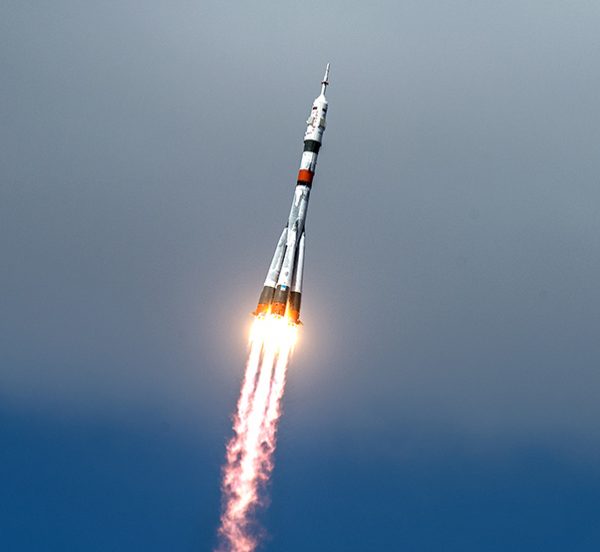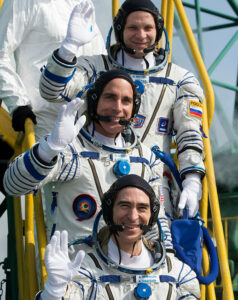NASA Astronaut Chris Cassidy, crewmates arrive safely at ISS – Aerotech News

NASA astronaut Chris Cassidy and two Russian cosmonauts arrived April 9 for their mission aboard the International Space Station, temporarily restoring the orbiting laboratory’s population to six people.
The Soyuz MS-16 spacecraft carrying Cassidy, along with Anatoly Ivanishin and Ivan Vagner of the Russian space agency Roscosmos, docked to the station’s Poisk service module at 10:13 a.m. after a four-orbit, six-hour flight. Their Soyuz spacecraft launched at 4:05 a.m., EDT, from the Baikonur Cosmodrome in Kazakhstan.
Cassidy, Ivanishin and Vagner will be part of the Expedition 62 crew for eight days.
Cassidy will become Expedition 63 commander upon the departure of Skripochka, Morgan and Meir, who will return to Earth on April 17, on the Soyuz MS-15 spacecraft, which will land in Kazakhstan.
A change of command ceremony with all six crew members is planned for 4:55 p.m. April 15, and will air live on NASA Television and the agency’s website.

It is the third spaceflight for Cassidy and Ivanishin and the first for Vagner, who are scheduled to return to Earth in October after a mission of more than six months during which they will conduct about 160 science investigations in fields such as, biology, Earth science, human research, physical sciences, and technology development. Work on the unique microgravity laboratory advances scientific knowledge and demonstrates new technologies, making research breakthroughs that will enable long-duration human and robotic exploration of the Moon and Mars.
The crew members of Expedition 63 are scheduled to be aboard the station to welcome the first commercial crew spacecraft, carrying NASA astronauts Bob Behnken and Doug Hurley, who will arrive on NASA’s SpaceX Demo-2 flight test, currently targeted to launch in mid-to-late May.
For almost 20 years, humans have lived and worked continuously aboard the International Space Station, advancing scientific knowledge and demonstrating new technologies, making research breakthroughs not possible on Earth. As a global endeavor, 239 people from 19 countries have visited the unique microgravity laboratory that has hosted more than 2,800 research investigations from researchers in 108 countries.






